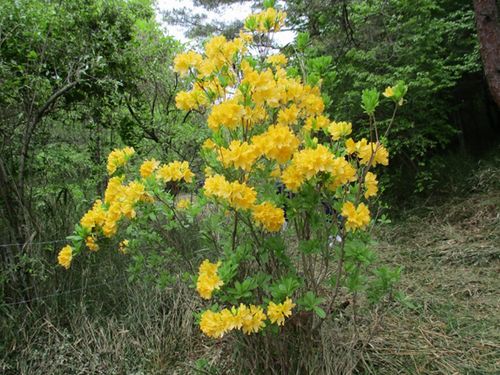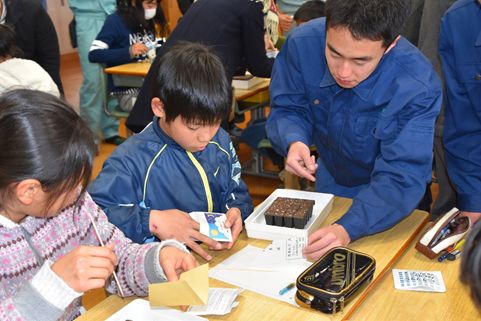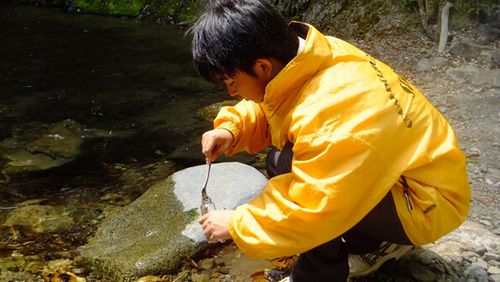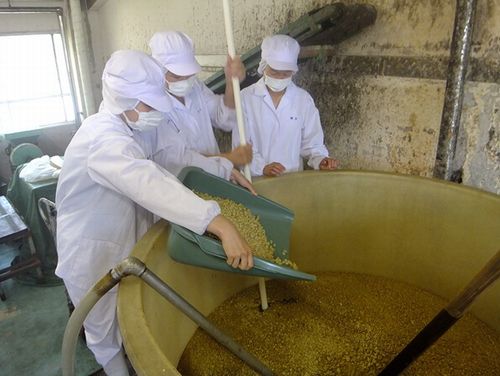December 21, 2017
Fifth Contest to Award Excellent Environmental and Social Practices by Junior High, High School Students
Keywords: Ecosystems / Biodiversity Education Food Newsletter Water
JFS Newsletter No.183 (November 2017)
A contest in Japan to award junior high and high school student groups for outstanding practices in environmental/social activities observed its fifth year in 2017. With the aim of supporting young student initiatives in environmental conservation, the contest has been held annually since 2013 by the Faculty of Environmental Studies at Tokyo City University, where Junko Edahiro, representative of Japan for Sustainability (JFS), works as a professor.
JFS has been serving as a partner organization since the fourth contest in 2016. The 2017 Awards Ceremony was held on October 28, 2017, with three student groups winning the Award of Excellence and one group among the three selected for the Grand Prize.
The following seven criteria were used to evaluate the applicants' performance: content and approach of the environmental/social activity; its results; degree to which other students are involved; degree to which other entities are involved; degree of satisfaction/learning among participating students; social impact; and potential for the activity's independent development and continuation. Edahiro was among the six members on the evaluation panel.
Here, we introduce the three winning groups and their activities.
Development and Promotion of the 'Bio-Engine' Water Treatment System Using Living Things
The Team "Flora Photonics" at Nakui Agricultural High School in Aomori Prefecture won the Grand Prize and the award by the chair of the Environmental Management Department at Tokyo City University. The team belongs to a group that studies plants in the Faculty of Environmental Systems at the school and conducts research and conservation activities.
The group's members have tackled the environmental pollution from eutrophication in lakes and reservoirs triggered by wastewater from household and industrial sources with excess nutrients such as nitrogen and phosphoric acid. The use of machines is generally the choice in water treatment, but the group has adopted a different method requiring no energy. After five years of research and trials, they succeeded to develop a biological-based water treatment system, named "Bio-Engine," which uses "Sun Patience" houseplants, nitrifying bacteria and mycorrhizal fungi.
They launched a demonstration trial at a pond on the grounds of a local junior high school in 2016. In this trial, they succeeded to eliminate all algae outbreaks in the pond, where bad smells from the algae had been a problem. Since then they have established the "Bio-Engine" water treatment system at eight sites so far. Citizens are pleased with this system, dubbed as "the most beautiful water treatment system in the world" as it works using no energy, but instead living things, and it also pleases people with beautiful flowers blossoming on the water.
Judge's comment: The judges highly credit the team's contribution to improving the local water environment by utilizing organisms including flowers and bacteria, which were developed as a water treatment system by the team for ponds at the town hall and library. We also note their environmental education activities. Their ambition goes beyond the local level -- they aim to help improve the water environment across Japan and even in other countries by commercializing their system. We highly anticipate and appreciate the team's continued activities.
Efforts to Restore a Japanese Azalea Plant Community
"Team Flower's" of the Oita Prefectural Kusumiyama High School won the Award of the Chair of the Restoration Ecology and Built Environment Department at Tokyo City University and also received the Award of Excellence for its outstanding environmental communication performance. Through its Japanese azalea conservation activities, the team is trying to restore the connection between local people and nature in the mountains, along rivers and in highly biodiverse rural regions near human settlements (known in Japan as "satochi-satoyama").

Copyright Team Flower's, Oita Prefectural Kusumiyama High School All Rights Reserved.
In its work, the team takes into account collaboration among stakeholders such as local residents in the Seitagawa District, the local education board, and the high school to which it belongs. The students conducted a field survey and discussed restoration of the flower. They developed a restoration plan based on their research findings, devising countermeasures to problems they'd discovered such as fewer chances for saplings to grow, long sprouting times due to the small size of its seeds, theft of plants and damage from pests feeding on it. The team requested permission from the Kusu education board and the cultural division of the Oita Prefectural Board of Education to replant the azalea, and their request was approved under two conditions: The seeds were from Japanese azaleas in the Seitagawa District and the seedlings for replanting had already been growing for two years or more.
The team is trying to involve more people in the community through lecture visits to elementary schools, flower planting at stations and awareness raising and publicity activities via websites and other media. For the future, the team aims to enhance the environment in the azalea's habitat, conduct further research on the azalea's population and genetic diversity, and replenish labor sources which are thought to be decreasing due to the declining birthrate and aging population.

Copyright Team Flower's, Oita Prefectural Kusumiyama High School All Rights Reserved.
Judge's Comment: The team have learned the basics of scientific field research and are passing the results on to younger student members who join the team every year. At the same time, they have cultivated close cooperative relationships with the prefectural education board, town hall, conservation groups, commercial and industrial associations, businesses, etc. The judges think highly of the team for considering some of the latest conservation schemes such as "Satoyama Banking"* and mitigation banking* in their work.
Note: "Satoyama Banking" is a biodiversity banking concept proposed by Prof. Akira Tanaka of Tokyo City University. Mitigation banking is the preservation, enhancement, restoration or creation (PERC) of habitat conservation areas to offset or compensate for expected adverse impacts on similar ecosystems nearby.
Potentials of Utilizing Spring Water
The Gifu prefectural Ogaki Yoro High School's project team, a food chemistry group in the food science course, has planned three projects utilizing water from a spring and waterfall in the area. The team was given the local collaboration award for its practice in utilizing water in commercialization. The food chemistry group conducts unique research as part of a local school, using water from the Yoro-no-taki waterfall and Kikusuisen spring, which are resources inherent in the town of Yoro.

Copyright Food chemistry Group, food science course, Gifu prefectural Ogaki Yoro High School All Rights Reserved.
The project started with the work of separating yeast fungi from Yoro-no-taki water to use in making "sake" and bread, and using water from the Kikusuisen spring to produce soy sauce. The team analyzed the water quality of the two sources and verified that the quality met river environmental standards set by the Ministry of the Environment. The team then succeeded in extracting four different yeast fungi from Yoro-no-taki water and, using a gene identification test, found one of them suitable for making sake and bread.
The team has not only brewed soy sauce using Kikusuisen water, but designed a DIY soy sauce kit incorporating the students' unique viewpoint. Students interviewed a local brewing company to pick up tips, and after performing many experiments, they successfully developed an original kit of their own. The team was even asked by a tourist association in the town to replicate a Yoro cider made from Kikusuisen water, which had been discontinued in 2000, and they took on that challenge too.

Copyright Food chemistry Group, food science course, Gifu prefectural Ogaki Yoro High School All Rights Reserved.
Judge's comment: The group has gained high-level knowledge through advice from specialists, including a cider manufacturer, a brewing company, the government and universities as well as by undertaking joint research with them. It has also developed environmental education activities targeting junior high school students, aimed at raising their awareness of the local environment. The group's small size belies the diversity, scale and level of its projects. Its activities are praiseworthy and further achievements are anticipated.
The presentations given by high school students at the contest were all of a higher quality than we anticipated, and we were surprised by their highly motivated research efforts. We were very impressed by their dynamism in drawing out solutions from the challenges facing them, taking on new issues and proceeding with their studies. We believe that their new discoveries and inventions will trigger local revitalization and popularity. We look forward to seeing further achievements from their efforts.
Written by Yuuka Anzai
Related
"JFS Newsletter"
- 'Good Companies in Japan' (Article No.4): 'Eightfold Satisfaction' Management for Everyone's Happiness
- "Nai-Mono-Wa-Nai": Ama Town's Concept of Sufficiency and Message to the World
- 'Yumekaze' Wind Turbine Project Connects Metro Consumers and Regional Producers: Seikatsu Club Consumers' Co-operative
- Shaping Japan's Energy toward 2050 Participating in the Round Table for Studying Energy Situations
- 'Good Companies in Japan' (Article No.3): Seeking Ways to Develop Societal Contribution along with Core Businesses



